Currency of the Philippines
The Philippine Peso (PHP), symbolized as ₱, and it is issued and regulated by the Bangko Sentral ng Pilipinas.
Would you like to learn about the various terms used to refer to money around the world? Terms such as moolah, cash, bread, bucks, cabbage, coin, currency, dough, lolly, loot, scratch, tender, or wampum. These terms are rarely used here because of the lack there of. Similar to many other developing countries, the Philippines has a significant wealth gap, with a few families being very rich while many others live in poverty. Despite the gradual increase in income levels, there remains a noticeable disparity between social classes. 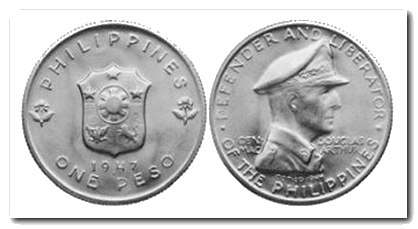 Living just outside the National Capital Region (NCR) border, I am surrounded by individuals who commute to Manila for work on a daily basis. This journey can take anywhere from two to four hours each way, with most returning home very exhausted around 7 or 8 PM at night. These individuals, who are predominantly considered middle class, work tirelessly at semi-decent paying jobs. Despite working long hours, often twelve hours a day, six days a week, they manage to maintain a positive attitude and a smile on their faces. Now, let's delve into the topic of money itself. The official currency of the Philippines is known as the Philippine Peso, or in Filipino, piso. This currency has its roots in Spanish colonialism dating back to the 1500s. The Peso is divided into 100 sentimo, also known as centavos. The symbol for the Peso is denoted by ₱, which was introduced during the American rule to replace the original peso sign, which was the $ (dollar sign). This change was made as the dollar sign was commonly used in Spanish America for their peso at that time. The Philippine monetary policy is overseen by the Bangko Sentral ng Pilipinas (BSP), established in 1993 as the country's central bank. The BSP is responsible for the production of banknotes and coins, with the recent introduction of the new ₱1000 bill sourced from Australia. Following the challenges of post-war recovery after WWII and the slow growth of agricultural production, the Central Bank of the Philippines implemented a fixed exchange rate system to stabilize the peso's value at ₱2 per US dollar. However, this led to the emergence of a black market where the exchange rate exceeded ₱3 to the US dollar. By 1962, maintaining the ₱2.00 Pesos to $1.00 US Dollar parity while safeguarding international reserves became unsustainable. Consequently, foreign exchange restrictions were lifted, and a new free-market exchange rate of ₱3.90 per $1.00 US Dollar was adopted in 1965. This shift marked a significant transition in the country's monetary policy framework.
Living just outside the National Capital Region (NCR) border, I am surrounded by individuals who commute to Manila for work on a daily basis. This journey can take anywhere from two to four hours each way, with most returning home very exhausted around 7 or 8 PM at night. These individuals, who are predominantly considered middle class, work tirelessly at semi-decent paying jobs. Despite working long hours, often twelve hours a day, six days a week, they manage to maintain a positive attitude and a smile on their faces. Now, let's delve into the topic of money itself. The official currency of the Philippines is known as the Philippine Peso, or in Filipino, piso. This currency has its roots in Spanish colonialism dating back to the 1500s. The Peso is divided into 100 sentimo, also known as centavos. The symbol for the Peso is denoted by ₱, which was introduced during the American rule to replace the original peso sign, which was the $ (dollar sign). This change was made as the dollar sign was commonly used in Spanish America for their peso at that time. The Philippine monetary policy is overseen by the Bangko Sentral ng Pilipinas (BSP), established in 1993 as the country's central bank. The BSP is responsible for the production of banknotes and coins, with the recent introduction of the new ₱1000 bill sourced from Australia. Following the challenges of post-war recovery after WWII and the slow growth of agricultural production, the Central Bank of the Philippines implemented a fixed exchange rate system to stabilize the peso's value at ₱2 per US dollar. However, this led to the emergence of a black market where the exchange rate exceeded ₱3 to the US dollar. By 1962, maintaining the ₱2.00 Pesos to $1.00 US Dollar parity while safeguarding international reserves became unsustainable. Consequently, foreign exchange restrictions were lifted, and a new free-market exchange rate of ₱3.90 per $1.00 US Dollar was adopted in 1965. This shift marked a significant transition in the country's monetary policy framework.
The money we use today
Let's examine the currency in circulation today, starting with coins. The smallest unit of currency currently in use is known as a centavo. In the past, a coin called a kusing was utilized, worth ½ of a centavo. However, it was phased out as the economy expanded due to the high production costs exceeding the coin's value. Similar to the US penny to the dollar, there are 100 centavos to a peso. While a centavo may seem insignificant, larger stores and malls have adopted pricing strategies similar to those in the US, such as pricing items at 2.99 to give the illusion of a lower cost. Despite this, many consumers opt to donate their centavos in donation cans located at various cash registers. Below, I will provide a list of all the coins in sequential order.
 |
 |
 |
 |
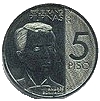 |
 |
 |
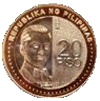 |
|---|---|---|---|---|---|---|---|
| 1 Centavo | 5 Centavo | 25 Centavo | 1 Peso | 5 Peso | 5 Peso (hexagonal) | 10 Peso | 20 Peso |
In 2009. . . The Central Bank of the Philippines announced a significant redesign of current banknotes and coins to enhance security features and improve durability. The new banknote designs showcase famous Filipinos and iconic natural wonders, while Philippine national symbols are depicted on coins. The initial batch of new banknotes was released in December 2010. However, errors were discovered on banknotes of the New Generation series. These errors included the exclusion of Batanes from the Philippine map on the reverse of all denominations, the misplacement of the Puerto Princesa Subterranean Underground River on the reverse of the 500-peso bill and the Tubbataha Reef on the 1000-peso bill, and incorrect coloring on the beak and feathers of the blue-napped parrot on the 500-peso bill. These mistakes were attributed to the color limitations of intaglio printing. Additionally, the scientific names of the animals featured on the reverse sides of all banknotes were inaccurately rendered in the 2010 series but were corrected starting in 2017. Despite these initial setbacks, the Central Bank has worked diligently to rectify these errors and ensure the accuracy and quality of the currency. Today, the redesigned banknotes are in circulation, reflecting the rich cultural heritage and natural beauty of the Philippines.
Old Bills
 |
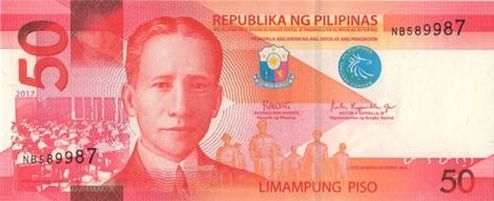 |
 |
 |
 |
 |
New Bills
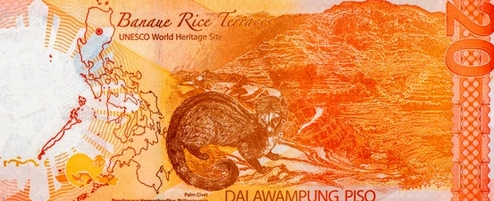 |
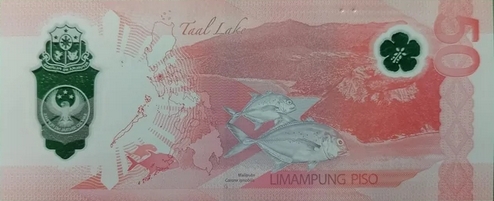 |
 |
 |
 |
 |
Philippine Peso Converter
(This converter updated when you entered this page)
